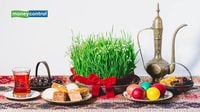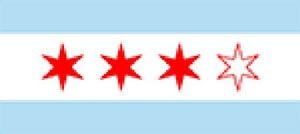As winter fades and spring heralds its arrival, millions commemorate Nowruz, the Persian New Year, which falls on March 20 in 2025, at 5:01 a.m. EST (or 12:31:30 p.m. Iran Standard Time). Though deeply rooted in Zoroastrian traditions, the celebrations today unite approximately 300 million individuals across Iran, the Caucasus, Central Asia, and beyond, emphasizing themes of hope, renewal, and new beginnings.
Nowruz, which translates to "new day," has been celebrated for over 3,000 years, making it one of the world’s oldest continuously observed festivals. It traditionally aligns with the vernal equinox, symbolizing the triumph of light over darkness and the awakening of nature from its winter slumber. As communities prepare to honor this ancient tradition, they engage in various activities that reflect cultural heritage, family ties, and aspirations for a prosperous new year.
Historians believe that Nowruz originated during the Achaemenid dynasty and was rooted in Zoroastrian practices, one of the earliest monotheistic religions. This festival not only bridges cultural gaps among diverse communities but also transcends religious boundaries, promoting unity and common joy. In recognition of its enduring significance, UNESCO listed Nowruz as an Intangible Cultural Heritage in 2010, cementing its position as a vital cultural asset.
The very essence of Nowruz lies in the preparations that families undertake to usher in the new year. One significant custom is Khaneh-Tekani, or deep cleaning of homes, which symbolizes clearing out old energy and making space for new beginnings. Families often wear new clothes to embody this renewal. Amidst these traditions, the Haft-Seen table plays a pivotal role. This table is adorned with seven items starting with the Persian letter 'S,' each representing different meaningful virtues, from health and prosperity to love and wisdom.
The Thanksgiving-like Haft-Seen table is a focal point during the Nowruz celebrations. Among its items, Sabzeh (sprouted greens) symbolizes rebirth, Samanu (sweet wheat pudding) stands for strength and prosperity, while Seer (garlic) and Seeb (apple) represent good health and beauty, respectively. Each item carries its own significance, inviting families to reflect on their hopes and the values they wish to uphold in the coming year.
As part of the festivities, families gather for special meals, exchanging gifts and enjoying dishes like sabzi polo ba mahi (herbed rice with fish) and ash reshteh (noodle soup). During the first days of Nowruz, it is common for people to visit family and friends, reinforcing social bonds and shared joy. In fact, the joyous environment encourages a strong sense of community, as people step outside their homes with renewed energy and optimism.
The eve of the last Wednesday before Nowruz is marked by the vibrant fire-jumping festival known as Chaharshanbe Suri, during which participants leap over bonfires. This symbolic act purifies the spirit and encourages people to let go of the past year’s burdens and embrace vitality and health. “Nowruz signifies renewal, hope, and the victory of light over darkness,” notes a cultural commentator, encapsulating the spirit of the festival.
As the 13-day celebration draws to a close, families plan outdoor outings for Sizdah Bedar, traditionally celebrated on the 13th day of Nowruz. This day emphasizes connecting with nature, and it involves outdoor picnics and discarding sprouted greens (Sabzeh) into running water, symbolizing the removal of bad luck and the closing of the Nowruz festivities. The concept of harmony with nature resonates profoundly during Sizdah Bedar, echoing the festival's overarching theme of renewal.
Across different regions, various communities add their unique twist to Nowruz celebrations. The Kurdish, Parsi, and Turkic communities, among others, infuse their own cultural elements into the festivities while preserving the core values of peace and unity. The Parsi New Year, for instance, which has its own rhythm, is celebrated in India during the height of summer, demonstrating the festival's adaptability and enduring relevance despite geographical and cultural differences.
Nowruz is not merely an event on the calendar; it represents a collective yearning for hope and rejuvenation. It brings families and friends together, and its observance is a constant reminder of humanity's resilience and interconnectedness. As the world gears up for Nowruz 2025, it is a moment to reflect on personal growth, cherish relationships, and celebrate the natural beauty surrounding us.
With its rich history, deep-rooted customs, and global observance, Nowruz continues to inspire and unite millions, encouraging us all to embrace the spirit of renewal and to welcome a brighter future.







